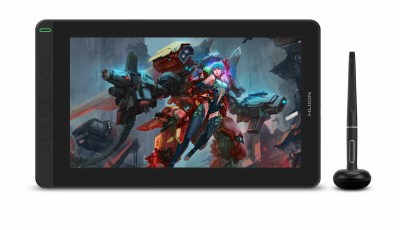CGPress uses technology like cookies to analyse the number of visitors to our site and how it is navigated. We DO NOT sell or profit from your data beyond displaying inconspicuous adverts relevant to CG artists. It'd really help us out if you could accept the cookies, but of course we appreciate your choice not to share data.
The technical storage or access is strictly necessary for the legitimate purpose of enabling the use of a specific service explicitly requested by the subscriber or user, or for the sole purpose of carrying out the transmission of a communication over an electronic communications network.
The technical storage or access is necessary for the legitimate purpose of storing preferences that are not requested by the subscriber or user.
The technical storage or access that is used exclusively for statistical purposes.
The technical storage or access that is used exclusively for anonymous statistical purposes. Without a subpoena, voluntary compliance on the part of your Internet Service Provider, or additional records from a third party, information stored or retrieved for this purpose alone cannot usually be used to identify you.
The technical storage or access is required to create user profiles to send advertising, or to track the user on a website or across several websites for similar marketing purposes.








Finally, a vectorized, parallel, path tracing rendering engine that supports Deep image output and a ton of other bells and whistles! And the entire code is available to study! Truly an incredible milestone in graphics, it’s like Unreal Engine 5 but for software renderers.
GitHub – dreamworksanimation/openmoonray
Can anyone explain what the big deal is here? Compared to the major render engines already on the market, what does this offer in real world difference?
For starts it’s open source, this means studios have more control over not only features needed or debugging of issues but also committing to a render engine is such a big and expensive decision that having a lot more control over the fate and cost over time of the adoption is huge.
Also deployment and scalability nodes in a cloud service like google is a breeze for these open projects compared to projects where license management is involved.
If this is not enough, let’s say you are trying to learn how render engines work, maybe you are a student or are trying to become a TD, now you have the code available for a state of the art render engine where you can study their (ongoing) implementation.
Lastly, debugging your own pipeline, at some point we were working in a project that was going to be rendered in Cycles, there was an error and we couldn’t get information online, we traced it to the source code and saw what the problem was, we made a couple of modifications to our process and presto.
Thanks – makes a lot of sense.
It is a studio production render. For dreamworks it makes sense to release to get external developers and artist that know the render in detail. When they hire a new artist, developer they know the render and dont start from zero.
Thanks.